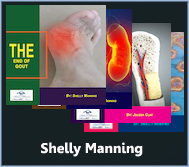Erectile dysfunction guideline
Erectile dysfunction (ED) guidelines provide recommendations for healthcare professionals on the evaluation, diagnosis, and management of ED in clinical practice. These guidelines are developed based on current evidence and expert consensus to ensure the provision of high-quality care for individuals affected by ED. Here is an overview of the general principles and key components of ED guidelines:
- Diagnostic Evaluation: Guidelines outline the steps for a comprehensive diagnostic evaluation of ED, which may include obtaining a thorough medical history, conducting a physical examination, and performing specific laboratory tests or imaging studies to identify underlying medical conditions or contributing factors.
- Risk Assessment: Guidelines may include recommendations for assessing the risk factors associated with ED, such as age, presence of chronic medical conditions (e.g., diabetes, hypertension), lifestyle factors (e.g., smoking, obesity), and psychosocial factors (e.g., depression, anxiety).
- Treatment Options: Guidelines provide information on various treatment options for ED, including lifestyle modifications, behavioral therapies, pharmacotherapy, and interventions such as vacuum erection devices, penile implants, or surgery. Treatment recommendations are tailored to individual patient preferences, medical history, and severity of ED.
- Pharmacotherapy: Guidelines offer guidance on the selection, dosing, and administration of pharmacological agents commonly used in the management of ED, such as phosphodiesterase type 5 (PDE5) inhibitors (e.g., sildenafil, tadalafil), intracavernosal injections, intraurethral suppositories, and hormonal therapy.
- Non-Pharmacological Interventions: Guidelines may include recommendations for non-pharmacological interventions for ED, such as lifestyle modifications (e.g., smoking cessation, weight loss, exercise), psychotherapy, behavioral therapy, couples counseling, and sexual counseling.
- Follow-Up and Monitoring: Guidelines emphasize the importance of follow-up and monitoring to assess treatment response, identify adverse effects, and make adjustments to the treatment plan as needed. Regular follow-up visits allow healthcare providers to address any concerns or questions patients may have and provide ongoing support and guidance.
- Patient Education: Guidelines highlight the importance of patient education in the management of ED, including providing information on the underlying causes of ED, treatment options, potential side effects of medications, and strategies for optimizing sexual health and satisfaction.
- Multidisciplinary Approach: Guidelines may recommend a multidisciplinary approach to the management of ED, involving collaboration between primary care providers, urologists, endocrinologists, mental health professionals, and other specialists as needed to address the complex medical, psychological, and social aspects of ED.
Overall, ED guidelines serve as valuable resources for healthcare professionals in delivering evidence-based care and optimizing outcomes for individuals affected by ED. By following guideline recommendations, healthcare providers can ensure that patients receive comprehensive, personalized, and effective management of ED tailored to their individual needs and preferences.
Erectile dysfunction Medscape
Medscape is a widely used online medical resource that provides healthcare professionals with up-to-date medical information, including guidelines, research articles, expert commentary, and educational materials on various medical conditions, including erectile dysfunction (ED). Here’s an overview of the information you might find on Medscape regarding ED:
- Overview and Epidemiology: Medscape offers comprehensive overviews of ED, including its definition, epidemiology, risk factors, and pathophysiology. These resources provide healthcare professionals with a foundational understanding of the condition.
- Clinical Presentation and Diagnosis: Medscape provides guidance on the clinical presentation of ED, including common signs and symptoms, as well as recommendations for the diagnostic evaluation of patients with ED. This includes information on obtaining a thorough medical history, conducting a physical examination, and performing specific tests to identify underlying causes or contributing factors.
- Treatment Options and Guidelines: Medscape offers information on various treatment options for ED, including pharmacotherapy, non-pharmacological interventions, and surgical options. This includes summaries of clinical guidelines and expert consensus recommendations for the management of ED.
- Pharmacotherapy: Detailed information on pharmacological agents commonly used in the treatment of ED, such as phosphodiesterase type 5 (PDE5) inhibitors (e.g., sildenafil, tadalafil), intracavernosal injections, and intraurethral suppositories. This includes dosing information, efficacy data, and potential adverse effects of medications.
- Non-Pharmacological Interventions: Information on lifestyle modifications, behavioral therapies, psychotherapy, and other non-pharmacological interventions for ED. This includes recommendations for smoking cessation, weight loss, exercise, and dietary changes to improve sexual health.
- Patient Education and Counseling: Resources for patient education and counseling, including information on the underlying causes of ED, treatment options, potential side effects of medications, and strategies for optimizing sexual health and satisfaction. This may include patient handouts, articles, and videos on sexual health topics.
- Clinical Updates and Research: Updates on the latest research and clinical trials related to ED, including emerging treatment modalities, novel therapeutic approaches, and advances in the understanding of the pathophysiology of ED.
- Continuing Medical Education (CME): Medscape offers CME courses and educational modules on ED, allowing healthcare professionals to earn credits while staying informed about the latest developments in the field.
Overall, Medscape serves as a valuable resource for healthcare professionals seeking evidence-based information, clinical guidance, and educational materials on erectile dysfunction and other medical conditions.
Erectile dysfunction approach
The approach to erectile dysfunction (ED) involves a comprehensive evaluation, diagnosis, and management plan tailored to the individual patient’s needs and preferences. Here’s a step-by-step approach to managing ED:
- Patient Assessment: Begin by conducting a thorough assessment of the patient’s medical history, including past medical conditions, medications, surgical history, and psychosocial factors. Inquire about the onset, duration, and severity of ED symptoms, as well as any precipitating factors or associated symptoms.
- Physical Examination: Perform a focused physical examination, including assessment of blood pressure, genitalia, and secondary sexual characteristics. Look for signs of hormonal abnormalities, vascular insufficiency, neurologic deficits, or other physical factors contributing to ED.
- Diagnostic Evaluation: Consider ordering diagnostic tests to identify underlying causes or contributing factors to ED. This may include laboratory tests (e.g., blood glucose, lipid profile, testosterone levels), imaging studies (e.g., penile ultrasound, cavernosography), and specialized tests (e.g., nocturnal penile tumescence testing).
- Lifestyle Modifications: Encourage lifestyle modifications that may improve erectile function and overall cardiovascular health. This includes recommendations for smoking cessation, weight loss, regular exercise, healthy diet, and moderation of alcohol consumption.
- Psychosocial Assessment: Assess for psychosocial factors that may contribute to ED, such as stress, anxiety, depression, relationship issues, or performance anxiety. Consider referring patients to a mental health professional or sex therapist for further evaluation and treatment if indicated.
- Pharmacotherapy: Initiate pharmacological treatment for ED as appropriate based on the underlying etiology and patient preferences. This may include phosphodiesterase type 5 (PDE5) inhibitors (e.g., sildenafil, tadalafil), which are first-line agents for ED, or other medications such as alprostadil, testosterone replacement therapy, or novel therapies.
- Non-Pharmacological Interventions: Consider non-pharmacological interventions for ED, including vacuum erection devices, penile implants, intraurethral suppositories, or intracavernosal injections. These interventions may be suitable for patients who do not respond to or cannot tolerate pharmacotherapy.
- Patient Education and Counseling: Provide comprehensive patient education on ED, including information about the condition, treatment options, potential side effects of medications, and strategies for optimizing sexual health and satisfaction. Address any misconceptions or concerns the patient may have about ED.
- Follow-Up and Monitoring: Schedule regular follow-up visits to monitor treatment response, assess for adverse effects, and make adjustments to the treatment plan as needed. Use follow-up visits as an opportunity to provide ongoing support, counseling, and encouragement to the patient.
- Multidisciplinary Collaboration: Consider involving a multidisciplinary team of healthcare professionals, including urologists, endocrinologists, mental health professionals, and sex therapists, to provide comprehensive care for patients with ED. Collaboration between providers can help address the complex medical, psychological, and social aspects of ED.
By following this approach, healthcare providers can develop personalized treatment plans for patients with ED, focusing on improving erectile function, enhancing overall sexual health and satisfaction, and addressing underlying medical or psychosocial issues contributing to the condition.
Click to see more detail on Video

Discover How Simple, Easy Exercises Drastically Increase Stamina And Heal Erectile Dysfunction From The Privacy Of Your Own Home…
Click to see more detail on Video





